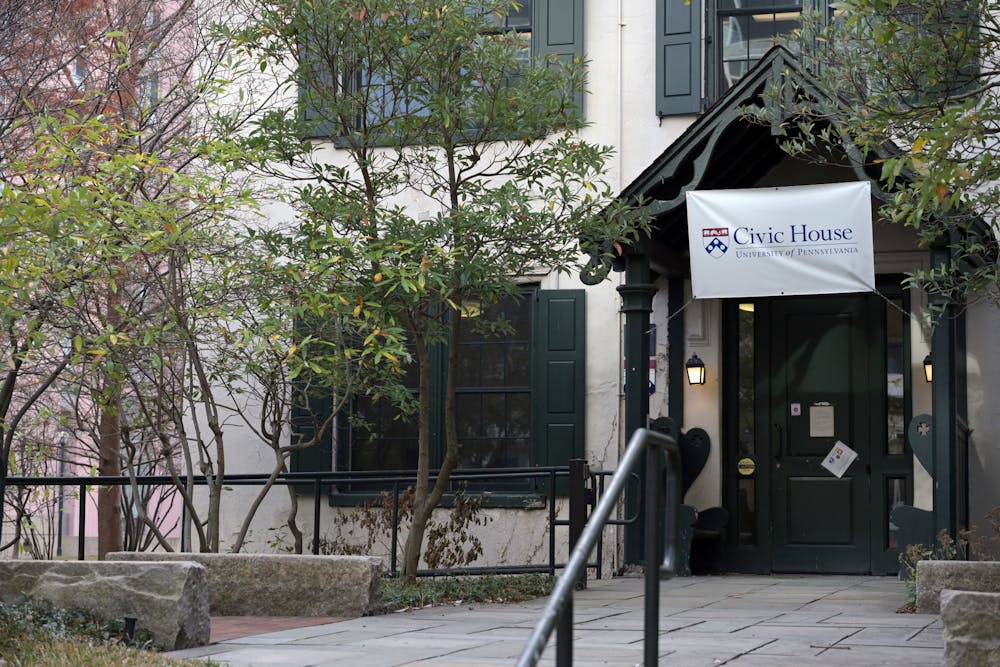
Why Not Prosper, a partner to Penn’s Civic House, opened the Formerly Incarcerated Renaissance Museum in Germantown, Pa. on Aug. 23 — the first museum dedicated to this community in the United States.
Why Not Prosper is a transitional community for women coming out of prison that dedicates resources to help them continue with their lives. F.I.R.M., whose opening coincided with Why Not Prosper's 23rd anniversary and was attended by over 250 people, was established to uplift the experiences, voices, and artwork of formerly incarcerated individuals.
Founder and CEO of Why Not Prosper Michelle Anne Simmons said she started Why Not Prosper when she was released from prison in 1999, with the goal of creating a house with open doors for others who needed support.
“Our target population is the women in jail and our goal is to work with them from the time they get sentenced until they move into their own apartment,” Simmons told The Daily Pennsylvanian.
She said that she came up with the idea for F.I.R.M. when she was brainstorming ways to celebrate the success of Why Not Prosper and the people they serve.
“We needed to leave a legacy, and we needed to do something that people could come and see,” Simmons said. “I wanted to memorialize us formerly incarcerated people, and I wanted it to be a safe space.”
F.I.R.M. is located directly behind Why Not Prosper in a large garage shed. The space was redone for the museum opening and is now designed to be one large exhibit that takes visitors around the perimeter of the room.
Why Not Prosper has partnered with Penn’s Civic House for the past eight years through Civic House’s student-facilitated Community Engagement Program and the Civic Scholars Program, which connect students with nonprofits in Pennsylvania. Through these programs, three to five students intern with Why Not Prosper each year working on administrative projects for the organization.
Wharton sophomore Deborah Pierre has been working with Why Not Prosper for a year and helped F.I.R.M. take off.
“It's designed in that way to tell a story,” Pierre said. “When you walk in, you have the people who are currently in prison. Then, you have the people whose work was done outside when they were released.”
F.I.R.M. came together quickly with the help of the Sisters With A Goal advocacy branch at Why Not Prosper, which became the museum’s Art Council.
“Starting with [Simmons’s] vision, I ended up sourcing a couple of people from Penn’s Stuart Weitzman School of Design to get background information on what a museum would look like and how to utilize resources she already had,” Pierre said.
2023 College graduate Kamille Houston has worked with Why Not Prosper since 2020 and was also involved in the creation of the museum. The team began distributing flyers asking for contributions to the project. At each event, they reached out to more people and made calls to connections across the country.
“It was really a general call to action,” Houston said. “It ranged from people sending in clothes they wore while incarcerated, books people wrote, to artwork that people had made. People sent in their pardon letters. One woman was shot in the head when she was arrested, so the bullet that she was shot with is hanging in the museum.”
The team determined an end goal for the museum and figured out actionable steps to get there. While Why Not Prosper is primarily focused on helping women, F.I.R.M. also includes artifacts from many formerly incarcerated men.
“A lot of the artifacts that are in there are not only stuff that [Simmons] has but has outsourced,” Pierre said. “She has a lot of contacts within the incarceration space. Not only does she go to prisons and do work there, but she also works with a lot of organizations outside of Pennsylvania, which helped us get such an in-depth display and cohesive storytelling, using her extensive contacts.”
Simmons plans to put together a book of the 117 people who are currently featured in the museum to extend their stories through text. She said that she has also been in contact with a Penn professor in the hopes of eventually creating a Penn course that would give students hands-on experience working with F.I.R.M.
The Daily Pennsylvanian is an independent, student-run newspaper. Please consider making a donation to support the coverage that shapes the University. Your generosity ensures a future of strong journalism at Penn.
Donate







